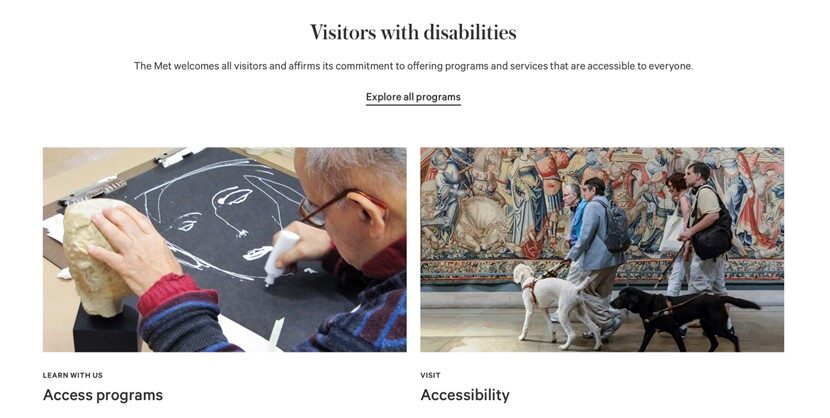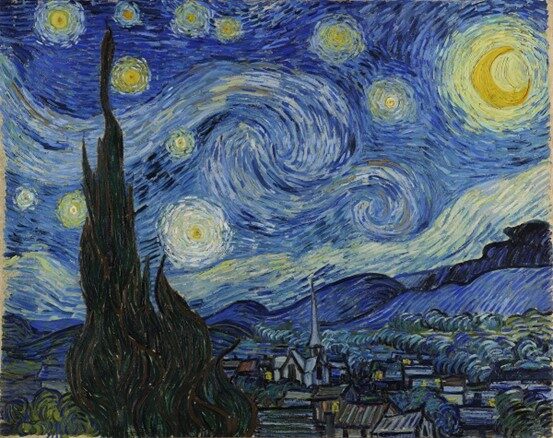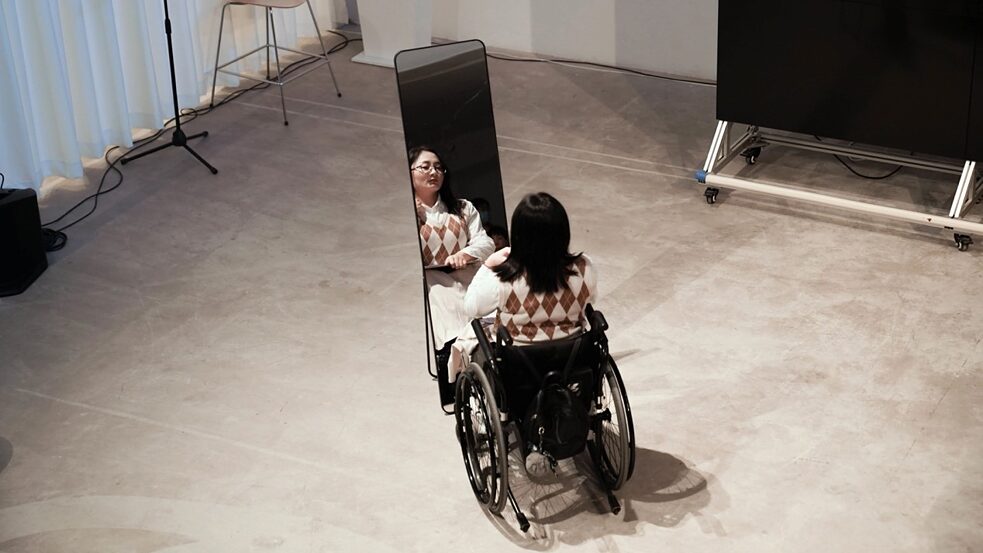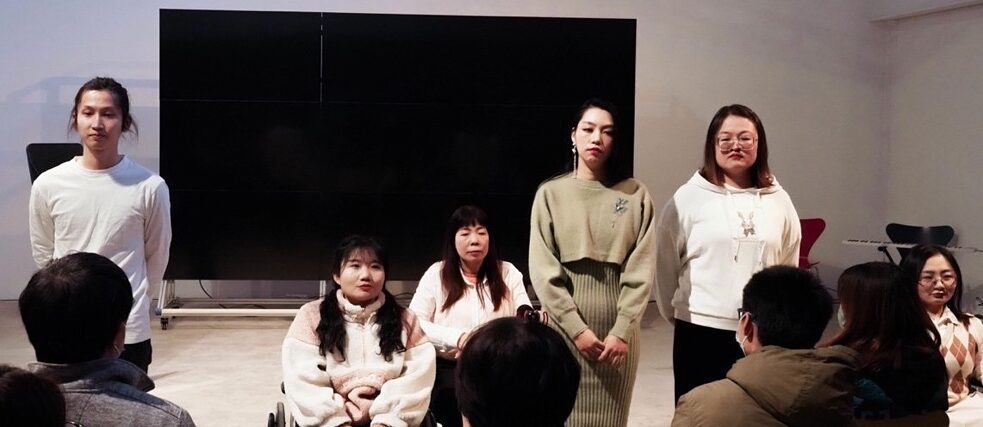
Inclusive Arts and Social Inclusion
By Peng YujiaoIn English, the word “art” comes from the Latin word “ars” which means skill or craftsmanship. The ancient Greek word “τεχνη” shares the same meaning. As Robin George Collingwood states that “art is not a skill,” the concept of art in ancient Greek and Latin is completely different from what we call “art” now.
1. The origin of art:
In English, the word “art” comes from the Latin word “ars” which means skill or craftsmanship. The ancient Greek word “τεχνη” shares the same meaning. As Robin George Collingwood states that “art is not a skill,” the concept of art in ancient Greek and Latin is completely different from what we call “art” now. In Ancient Greek, art refers to “crafts or specialized skills such as carpentry, ironwork, and surgery.” [1]
A widely recognized landmark in the discourse of art is the treatise published by French scholar Charles Batteux in the mid-eighteenth century titled Les beaux arts réduits à un même principe (translated into English as The Fine Arts Reduced to a Single Principle). It is regarded as a historical breakthrough for art to be independent of craftsmanship. Under this watershed moment, the history of art as a concept can be divided into two eras: the former is the “craftmanship era,” and the latter is the “aesthetics era.”
It is a common topic in the art world to discuss “where art is from and where it will go.” We have all heard the saying: “Art is the source of life and is better than life.” There are different hypotheses about the origin of art in academic circles, including imitation theory, game theory, witchcraft theory, and labor theory.
Traditionally, art is considered a tool and product of the spiritual and emotional experience of the middle and upper classes—whether it is to experience art in museums, art galleries, and theaters, or to participate in art education courses such as music, dance, and painting, people must have reached a certain level of wealth and purchasing power. However, the original definition of art welcomes the participation of all people, regardless of their class, gender, and race.
2. Inclusive arts
Today, art not only allows people to appreciate beauty but also gives meaning and impact to creativity, healing, and social change. To help build a diverse society, Alice Fox, Principal Lecturer and Deputy Head in the College of Arts and Humanities, and Dr. Hannah Macpherson, Senior Lecturer in Human Geography, both at the University of Brighton, United Kingdom, first introduced the concept of inclusive arts, which refers to the creative artistic practices that disabled and non-disabled artists collaborate on. It is an emerging artistic approach that involves all artistic fields, aiming to develop the skills, knowledge, and technology to create high-quality works of art and other creative experiences. The collaborative process of inclusive arts is designed to create a mutually beneficial dialogue that allows the participating artists to learn from each other (or learn to let go of stereotypes) (learn/unlearn). [2]
As an important artistic tool, inclusive arts can help people with disabilities realize their creative potential, bring about change in communication methods, and enables self-advocacy among people with disabilities. The process of creating inclusive arts also provides new perspectives and visions of society. [2]
A. Diversity of creators
To make art accessible, artists and creators should be given the opportunities and resources to make art and express themselves with a wide range of tools. They can be elderly, disabled, or living in impoverished regions lacking resources but full of imagination and creative potential.
Their creations often reflect their observation, imitation, and reflection on society. In the artistic expression of visual art, some works by disabled artists are better than those by non-disabled artists, such as Van Gogh’s severed ear and Frida’s self-portrait, revealing the artists’ self-identity. Works by artists who have experienced ups and downs in their lives or have great emotional awareness are often more powerful, such as the poems by Yu Xiuhua, whose cerebral palsy had a profound impact on her life while expanding her perception of pain and beauty. Therefore, her poems are incredibly moving.
B. Inclusive content
Art often carries symbolic meanings, such as the German Nazi swastika during World War II which conveys collectivist aesthetics and the political influence and deterrence of the authority. Meanwhile, art serves as a tool and outlet for collective appeals, such as the American TV series The Handmaid’s Tale which expresses women’s concerns about equality and the future of social justice. Movies like Hope and Dying to Survive that are based on social realities can also bring about policy change and improves social conditions. The protagonists in these works are flawed but charming, full of dramatic tension. People’s imperfections are the magnifying glasses of their personality traits that reveal the truth, beauty, falsehood, and ugliness in the world; they are also the fuses that ignite the ultimate charm and complexity of human nature.
C. Inclusive venues
Art accessibility also refers to the inclusive environments of arts venues and experiences, such as the accessibility facilities in museums, galleries, concert halls, and theaters, including accessible seats and handrails on ramps for wheelchair users, interpretation services for people who are deaf or speakers of other languages, and tours and Braille labels for people who are blind.
The following are the accessibility services provided by the Metropolitan Museum of New York for visitors with disabilities, including multilingual tours and sign language interpretation, so that people with different disabilities, the elderly, and those with other needs can have the opportunity to participate in the museum’s activities and enjoy art.
 Accessibility page on the website of the Metropolitan Museum of Art: The picture on the left is an old man with glasses touching a head sculpture with his left hand and drawing a face on a blackboard with his right hand; the picture on the right has two people who are blind each walking with a guide dog on one side and a sighted person on the other. | © Metropolitan Museum of Art
Accessibility page on the website of the Metropolitan Museum of Art: The picture on the left is an old man with glasses touching a head sculpture with his left hand and drawing a face on a blackboard with his right hand; the picture on the right has two people who are blind each walking with a guide dog on one side and a sighted person on the other. | © Metropolitan Museum of Art
D. Art therapy
Another aspect of art accessibility is emotional expression, non-violent communication, and the healing of the viewers and the creators.
Art therapy is a form of companionship and a subject of dialogue in the language of art. The emotions and feelings evoked in the viewers are intertwined with the artist’s own state of mind, the materials they used, their brushstrokes, and their personal interpretation of the work… For example, Van Gogh’s The Starry Nightdepicts a world in the artist’s mind, but the viewers can connect and resonate with the artist from their own time and space.
 Van Gogh’s oil painting The Starry Night depicts the night sky in Van Gogh’s mind. The dazzling starry sky in different shades of blue is intertwined with twinkling stars. The village under the sky is quiet and beautiful; the orange lights in houses echo the stars in the sky. | © internet sources
Van Gogh’s oil painting The Starry Night depicts the night sky in Van Gogh’s mind. The dazzling starry sky in different shades of blue is intertwined with twinkling stars. The village under the sky is quiet and beautiful; the orange lights in houses echo the stars in the sky. | © internet sources
Art plays an important role in “presenting our inner authentic self.” When we look at a painting, we are also looking at the creator (the “other”) and in turn looking at ourselves through the “other.” We empathize with the creator to gain understanding and support. We can be a gallery in which the artworks are placed, an interpreter, or an ordinary viewer.
Leonardo da Vinci once said: Painting is mute poetry, and poetry is blind painting.
The practice of inclusive arts – theater performance What a Wonderful Life
The inclusive theater performance What a Wonderful Life produced by the Beijing Enable Sister Center that I founded premiered in December 2021. After eight rehearsals led by Xin Theater Company and director Qiu Lin, twelve disabled actors and six non-disabled actors participated in the performance. The actors built deep connections with each other during the rehearsals. Each rehearsal felt like a process of healing and innovation that allowed the actors to open themselves for self-understanding and mutual consoling. For the actors with disabilities, the authenticity of viewing, hearing, and feeling in live theater and the vulnerability of the characters help them not only accept their disabilities but also embrace self-healing. Meanwhile, the public-facing performances of imperfect characters raise awareness of social issues and advocate social inclusion. Altogether, this project achieved the goals of inclusion, healing, and advocacy, embodying the principles of inclusive arts such as the accessibility of its venue and the presence of sign language volunteers. Below are two pictures from the performance.
 Figure no. 1 from the performance of What a Wonderful Life: A female wheelchair user looks at herself in the mirror. She is wearing a diamond-patterned sweater with black medium-length hair over her shoulders. | © internet sources
Figure no. 1 from the performance of What a Wonderful Life: A female wheelchair user looks at herself in the mirror. She is wearing a diamond-patterned sweater with black medium-length hair over her shoulders. | © internet sources
 Figure no. 2 from the performance of What a Wonderful Life: Six actors stand in a row to make speeches. From left to right are an actor in a white T-shirt, two actresses in wheelchairs (the one on the left has two pigtails, wearing a thick pale pink coat, and the one on the right has long black hair, wearing a pale pink top), two actresses standing on the right (the one on the left has delicate makeup, wearing a camel-colored dress and the one on the right is wearing glasses and a white hoodie), and an actress in a wheelchair who also appears in Figure no. 1. This is the last scene where the actors are on stage together. | © internet sources
Figure no. 2 from the performance of What a Wonderful Life: Six actors stand in a row to make speeches. From left to right are an actor in a white T-shirt, two actresses in wheelchairs (the one on the left has two pigtails, wearing a thick pale pink coat, and the one on the right has long black hair, wearing a pale pink top), two actresses standing on the right (the one on the left has delicate makeup, wearing a camel-colored dress and the one on the right is wearing glasses and a white hoodie), and an actress in a wheelchair who also appears in Figure no. 1. This is the last scene where the actors are on stage together. | © internet sources
[1] Li X. “The Definition and Principle of Art: An Empirical Explanation of the History of Art”. In A Hundred Teachers of Art, issue 2, 2020.
[2] Fox A, Macpherson H. Inclusive Arts Practice and Research: A Critical Manifesto[J]. Routledge, 2015.